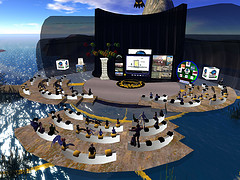This is Part II of a two part blog on avatars. If you haven’t already you can read Part I below.
So what’s the point? How can this technology be applied to provide us with something useful?
For online businesses, developing a virtual sales agent that is capable of motivating the sites visitors into investigating the company or product further by engaging them in a conversation is powerful. This interaction should make a connection with the visitor and provide them with information regarding products and services, in turn creating the opportunity to convert investigating visitors into customers. At Bunnyfoot we have undertaken numerous testing projects involving the use of agents to support the sales journey. The most successful agents support a wide variety of user enquiries and provide the company with valuable information about customer likes, dislikes and behaviour.
There could be an argument around whether there is room within commercial business for this type of technology to flourish and develop. We recently had discussion as part of an ongoing project with a Financial client regarding the use of an avatar within their ‘help’ section; we advised that the technology available to them at this point would not improve their online customer experience. However I feel that avatars and intelligent agents placed within the right application, using the right technology (available) and with the correct user research behind them can assist and enhance the user journey. There is obviously a large cost implication to this type of development but it is an area that Bunnyfoot is excited to have the potential and knowledge to move into.

I believe the benefits extend more importantly to the areas of health and education. Throughout the Health sector virtual worlds and avatars are being used to treat phobias, assist in behavioural therapy and train professionals. The Education sector are creating and implementing virtual environments and programmes to educate children on healthy eating and exercise also with great success. There has been a surge in distance education since it has become more accessible across the country on account of cheaper technology; the need to provide students with a classroom feel has grown. Creating a personalised and socially engaging environment to collaborate within has been shown to increase feelings of community and engagement and decrease that of social isolation and in some cases increase efficiency.
However what are the implications of these increasing virtual interactions? If we are interacting more and more with artificial intelligence in a virtual world what are the consequences on our real-life social interactions?

Some argue that this type of technology could be destroying our sense of self and could even be the beginning of the end of society. So are they afraid because it is something new to them or because it could in fact be harmful?
I believe we are social beings who inherently seek to make connections, build communities, and search for companionship. I don’t think that even though these technologies are going to create interactions that mirror and replicate those of real-life, they will never be able to replace them. As with everything there are pros and cons and I believe that the benefits to certain groups of users (autistic children, medical staff, the mentally ill, customers) far out way the negatives. If you have thoughts to the alternative please feel free to post them here and I’ll do my best to respond.




